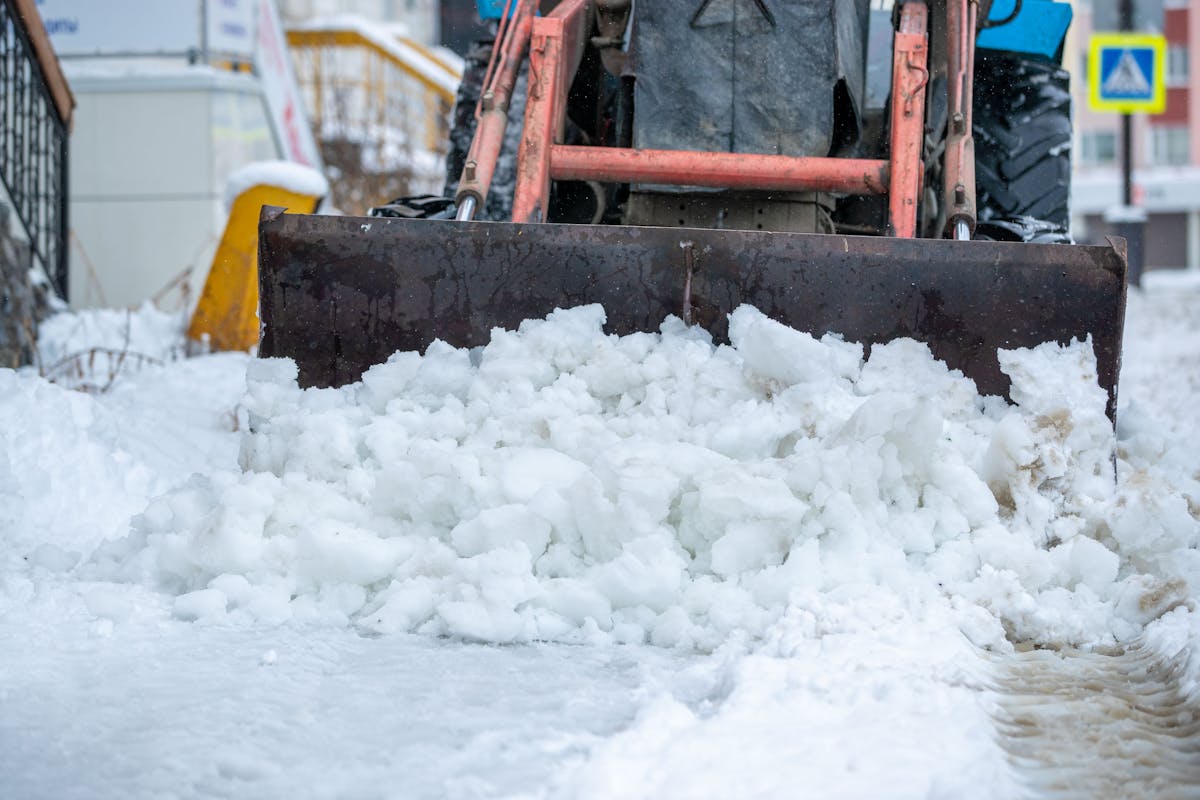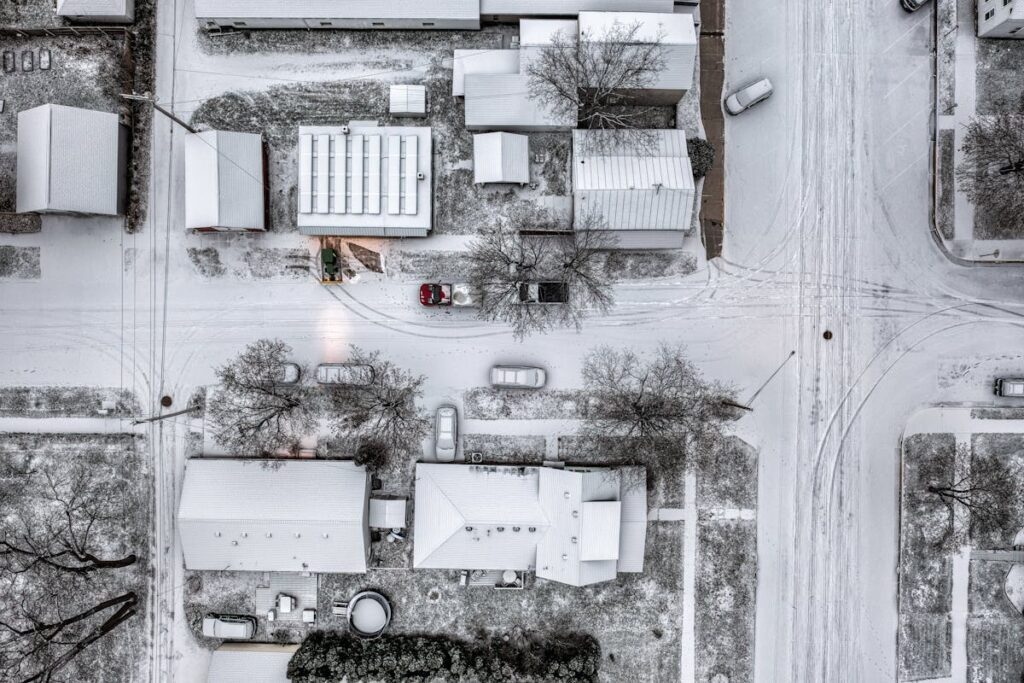You want a clear driveway, not a torn-up mess in spring. Gravel driveways are tricky in winter because one wrong move and you’re scraping up half your stone. Based on what actually works, here’s the straight truth on how to manage snow without damaging your driveway or wasting your time.
A gravel driveway doesn’t behave like pavement. It shifts, settles, and holds moisture. When snow hits it, it sticks differently across the surface. If you’ve ever run a shovel across loose gravel, you already know the outcome. You get more gravel in your shovel than snow. That’s why the core goal isn’t to clear everything down to bare ground. It’s to remove enough snow to drive safely while keeping your stone exactly where it belongs.
Why Gravel Driveways Need a Different Snow Strategy
Gravel moves. Snow melts, refreezes, compacts, and locks into the stones. If you push too aggressively, you dig trenches. Those trenches turn into ruts. When spring comes, you’re buying more gravel and spending another weekend filling holes.
The better approach is to let the driveway work for you instead of against you. Clearing everything completely isn’t just unnecessary — it’s what destroys your driveway in the first place.
Most homeowners who deal with snow on gravel say the same thing: the smartest move is to leave a thin base of snow. One to two inches is enough. That little layer freezes and forms a protective shell so your shovel, snow blower, or plow isn’t ripping gravel out every time you clear the driveway.
Prep Work Before Winter Makes Everything Easier
Good snow removal starts long before the first storm.
If your driveway has dips, low spots, or uneven patches, winter will expose them fast. Leveling it in fall is one of the best moves you can make. Adding fresh gravel to the areas you use the most — like the turning section and the parking area — gives the surface a more even grade so water drains instead of pooling and freezing.
Edge markers matter too. When visibility drops, markers keep you from taking a shovel, snow blower, or plow too far to one side. It sounds small, but it’s the difference between a clean pass and a chewed-up shoulder.
Another trick: let the first snowfall pack down instead of clearing it. Drive over it a few times, let it compact, and you’ll have a smooth base for the rest of the season. It gives you traction, protects the gravel, and makes every clearing after that easier.
The Right Tools for the Job
You don’t need fancy equipment, but you do need tools that won’t dig up the stones.
Light Snow (Dry, Fluffy, Under 4 Inches)
A leaf blower works better than most people expect. It clears snow without touching the gravel at all. For early storms or small accumulations, it’s one of the cleanest solutions.
Moderate Snow
When the snow is a little heavier, stick to plastic or rounded-edge shovels. Push instead of scoop. The goal isn’t to hit the gravel — it’s to peel away the layers you can reach without digging.
Rakes also come in handy, especially if the snow compacts. A garden rake with wide tines can break the surface without pulling up the stones. For bigger driveways, a landscape rake attached to a tractor does the same job faster.
Heavy Snow or Large Driveways
This is where machinery matters.
A two-stage or three-stage snow blower is the safest machine to use on gravel. It has adjustable skid shoes that lift the auger an inch or two above the surface. Single-stage blowers sit too low and will eat gravel.
If your driveway stretches 300–400 feet or more, a plow on a truck or ATV gets the job done. But you need to set the plow shoes high enough so the blade floats above the gravel. A plow pushed too low will strip the top of your driveway clean.
Tractors also work well when they have the right attachments — either a front blower or a rear landscape rake. They give you power without the risk of scraping.
Smart Techniques That Protect the Gravel
The best method is simple: never try to clear down to the ground.
Every pass should leave a little snow behind. For shoveling, stop before you feel the gravel. For snow blowers, raise the skid shoes. For plows, use the float setting so the blade doesn’t dig.
Work in layers for deeper snow. Don’t try to take off a foot of snow in one go. Remove the top half, then go back for the lower half. It’s cleaner, safer, and easier on your equipment.
Clear fresh snow before people walk on it. Foot traffic compacts snow into ice, and ice is much harder to remove without damaging the driveway.
Should You Use Salt on a Gravel Driveway?
Salt melts ice. That’s true. But on gravel, melted ice becomes mud, and mud becomes a mess.
There’s also runoff. Salt can seep into soil, damage nearby plants, and contaminate groundwater. If you have pets or a well, salt becomes an even bigger issue.
A better option is sand or a sand–salt mix. Sand gives traction without melting anything. Pet-safe ice melts also work for areas near steps, walkways, and doors. Use them lightly, not as a full driveway treatment.
Safety First Every Time You Clear Snow
Snow removal is physical. It’s repetitive. It’s easy to strain your back if you’re not careful.
Warm up before you start. Bend your knees, not your back. Push instead of lift. Take breaks. Wear boots that grip well and gloves that keep your hands warm without sacrificing movement.
If you’re using a machine, check tire pressure, wear hearing protection, and never operate when you’re tired. Most injuries happen when people rush.
Visibility also matters. Avoid piling snow in places where it blocks your line of sight or forces cars to swing wide into the road.
After Winter: Fix the Driveway Fast
When everything melts, inspect the driveway. Even with the best technique, gravel moves a little.
Rake displaced gravel back into place. Fill potholes early before they spread. Add new gravel where needed so the driveway stays level for next winter.
A quick regrade in spring sets you up for an easier season the next time snow returns.
Let Ware Landscaping Handle Winter for You
If you want the job done fast, clean, and without tearing up your gravel driveway, let the pros do it.
Ware Landscaping handles winter the right way — no damage, no stress, no wasted weekends. Whether it’s snow removal, ice control, or keeping your property safe all season, our team shows up on time and gets it done properly.
Book your snow removal service with Ware Landscaping today and stay ahead of the next storm.








